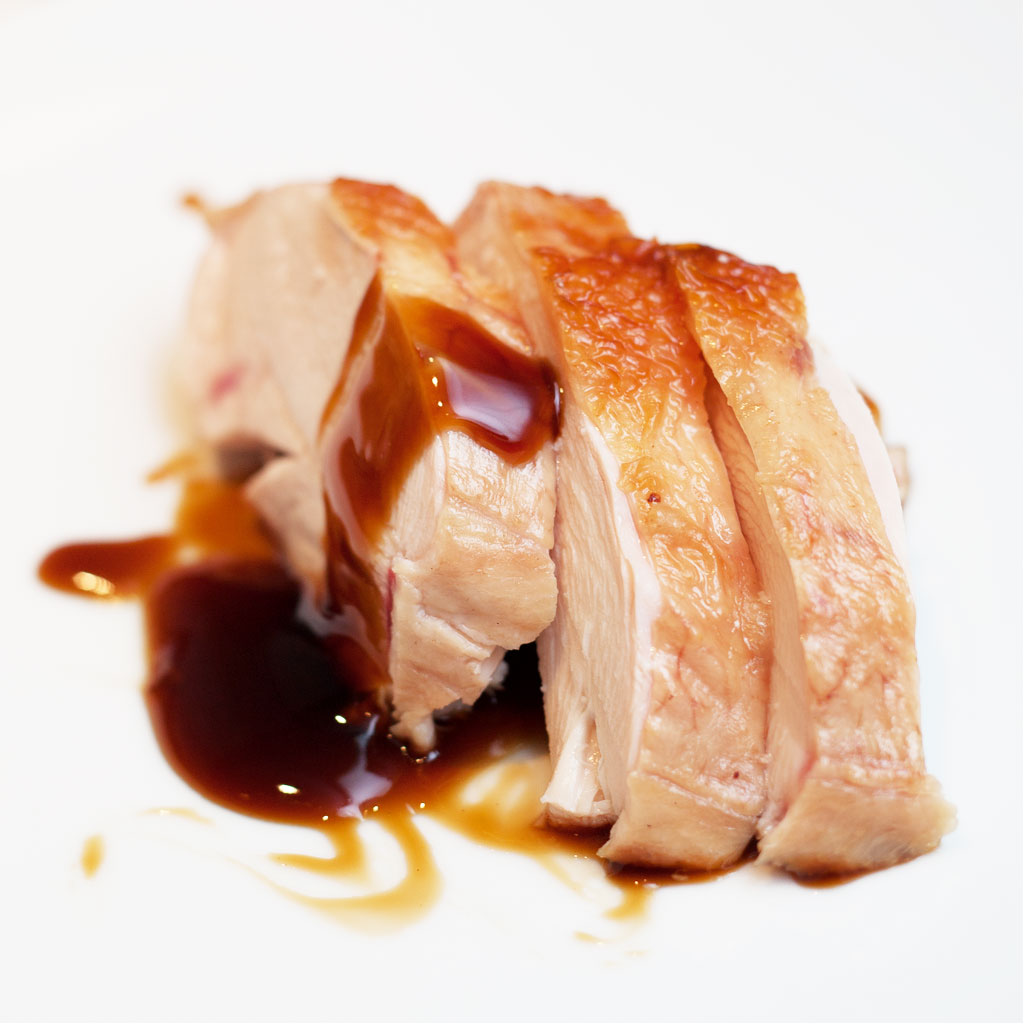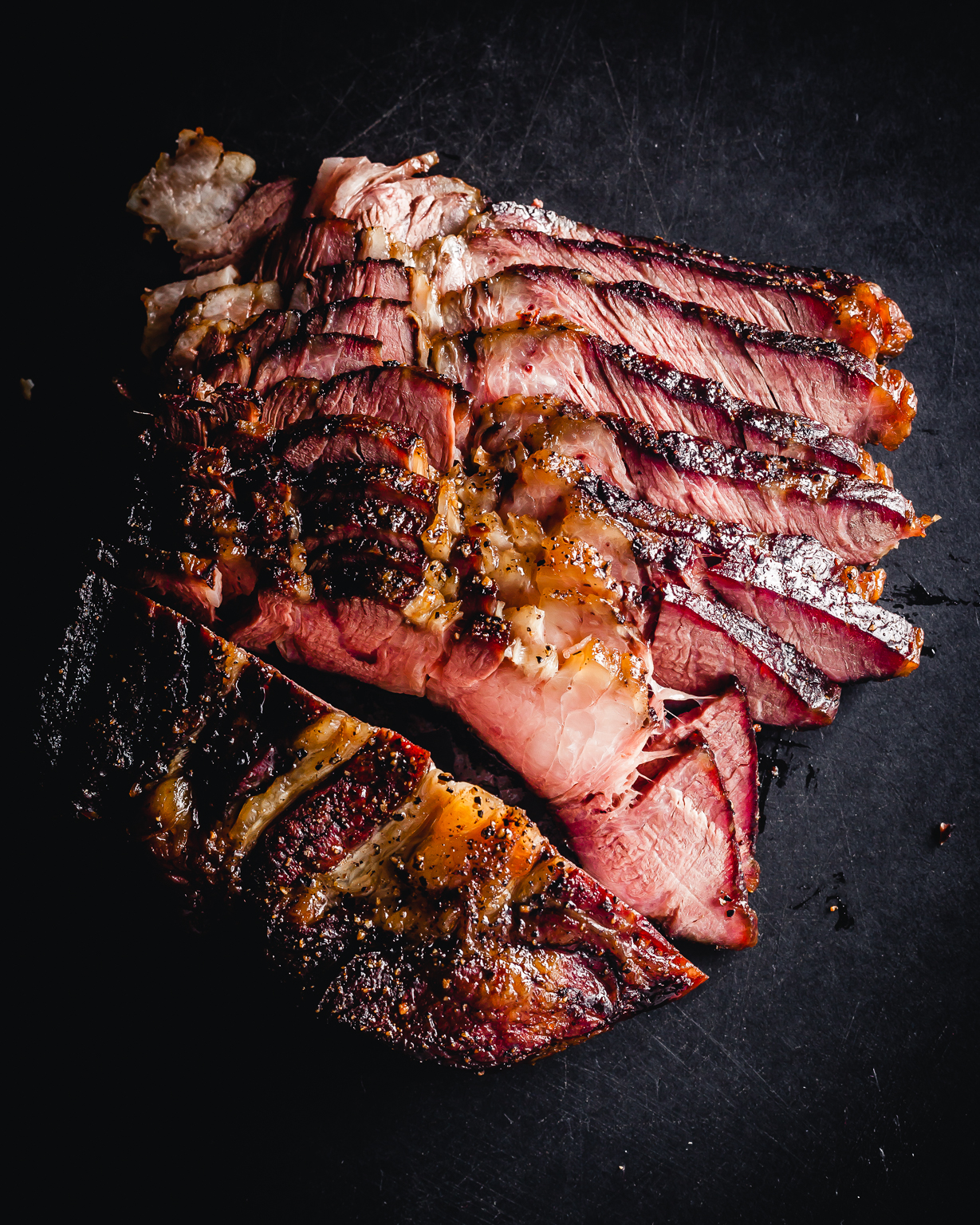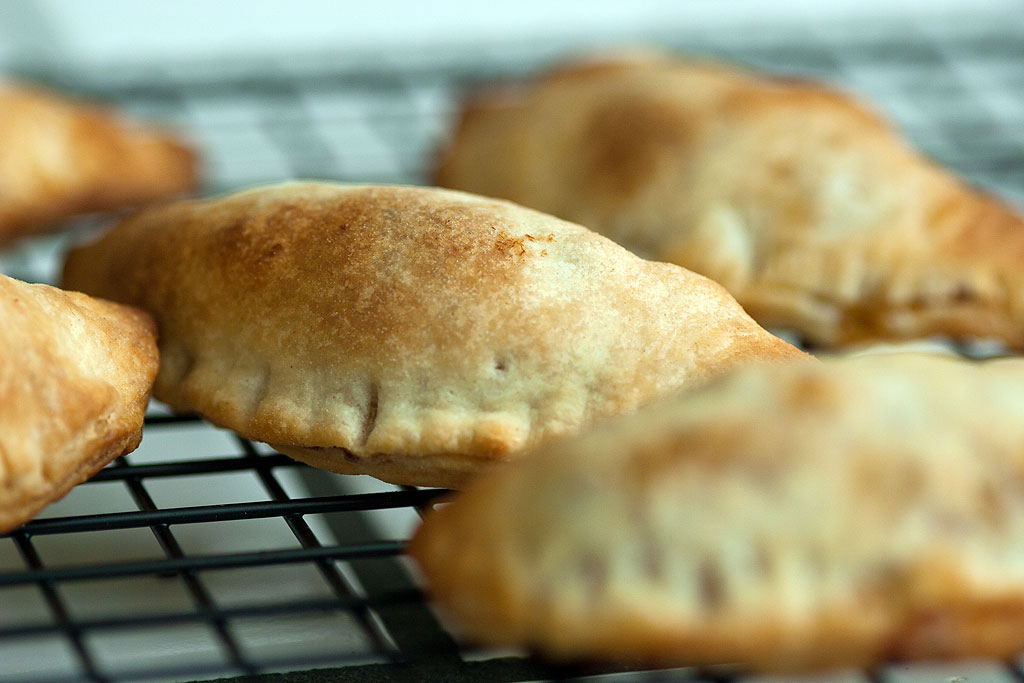Quick appetizer! but you must control that oven at all cost! carry over heat is hard to tame, and the formulas and mind numbing pages and pages of how heat travels through food are very hard to grasp, at least for me. Nothing like testing and trying and taking notes and trying again and learning from doing. A nice way to brown food that has been cooked sous vide is to torch it, but have you tried it? it’s hands on! and it will take a long time and there’s always the chance that food might taste a bit like the fuel that was used. I like my oven, as imprecise as it is, still does a pretty good job when I need to throw something in it, forget about it for 20 minutes and there it is, nice and toasty. The problem with doing this using food coming out of the sous vide bath is obvious, the harsh temperature of the oven will overcook it. The torch does a pretty good job at not doing this, the direct heat from the flame diffuses too fast at the surface and doesn’t travel far into the food. Infrared heat and convection heat work differently, they have a much easier way traveling through the food, that’s why they must be stopped at the surface. A simple way to achieve this is by cooling the product. You don’t need to freeze it, but if the outer layer of the food is pretty cold, heat will have a difficult time penetrating it. This can be adjusted so when done, the internal temperature of the food is right, and the outer surface of the food is golden and crispy.
Anyways, chicken with oyster sauce is a great combination. Darker meat works better, but I didn’t have any today, here’s what I did:
Gear:
knife
cutting board
roasting rack
pan to catch drippings lined with aluminum foil
immersion circulator
vacuum sealer
vacuum seal baggies
oven 500f
Ingredients:
1 large chicken breast, deboned, skin on.
30 grams butter
Oyster Sauce to taste
Salt to Taste
Method:
01: place chicken breasts in bag, add butter and salt
02: vacuum seal
03: set immersion circulator to 58 C or 136.4 F
04: place baggie in the water bath
05: when butter melts redistribute mix to allow salt to cover breast
06: cook for 2 hours.
07: place in the fridge and allow to rest 30 minutes or more.
08: oven at 500g allow an extra 20 min to heat up really well
09: while oven is warming up, place breast in the freezer 20 min
10: place cold chicken on roasting rack and place in oven
11: roast until skin is brown and crispy, about 15 mins
12: inside should be warm and moist, ready to serve
13: slice and dress with oyster sauce
14: serve immediately
done!
Wanna get more sous-vide cooking guides and cool cooking how-to’s in your mailbox? You know what needs to be done!
We never spam. You should only be getting updates when new content is posted on the site. We also respect your privacy. We don’t share your email address with anyone and you can unsubscribe anytime!





6 comments
Interesting technique! Haven’t tried this yet because I worry the oven would eliminate the sous-vide “edge to edge” doneness. I depend on a very hot (450 degrees) skillet with clarified butter for my browning after sous-vide. I’ve also seen someone cooking and freezing like you did, and then deep-frying!
edge to edge doneness will suffer either way, but you’re right, an oven will have the toughest time at browning anything therefore overcooking the surface a bit but not to the point of ruining the meat, an personally a bit of a doneness gradient can enhance the look of meats sometimes, freezing helps and that’s partially my approach here. Deep frying would be best, agreed. Thanks for your input Stefan!!!
You Guys and your sous-vide! That really does look like a delicious way to prepare and serve chicken breast. I tend to avoid the breasts because they’re too dry. I don’t think that’s a problem here. Well done, Paul.
John, Sous vide cooking will greatly improve the texture and juiciness of meats, I for the longest time didnt like chicken breasts for the same reason, always dry. That’s just because we usually over cook them. Once I tried cooking them to the right temperature either by sous vide cooking or roasting or pan searing, etc… they became juicy and succulent. Im glad you liked my post, thanks for checking in!! 🙂
i couldnt believe how tender a sous vide chicken breast was (148 degrees) when i tried outnmy souvidesupreme demi machine. i only cooked mine for 1:15. i notice you have a tendancy tocook your stuff for a lllloooong time.. with the exception of tough cuts, you dont need 12 hours of cooking.
Hi Steve! thank you for stopping by and for your feedback, I really appreciate it! I think you’re right, chicken breasts don’t need long cooking times, and your suggested cooking time is an improvement since chicken breasts will dry out if cooked for too long even if cooked at the right temperature. This post was one of my first sous vide recipes, and like you, these days I cook chicken breasts in less time. My only concern with quicker cooking times for chicken is pasteurization which is something of paramount importance so I tend to be really careful there. When cooking chicken breasts with the bone in, then I really take the hit and cook for a bit longer.